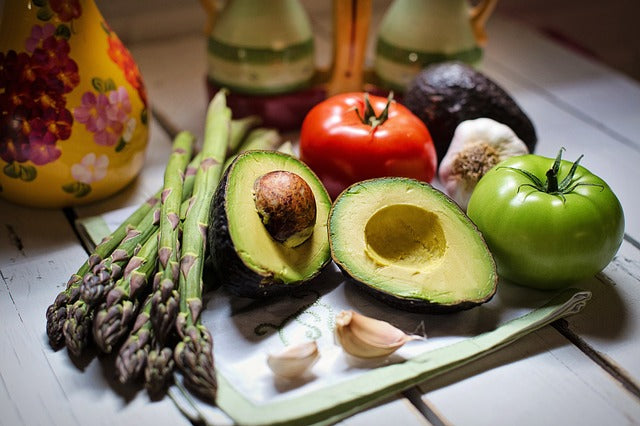Have you ever noticed how some foods seem to resemble parts of the human body? It turns out, this isn’t just a quirky coincidence—it’s a fascinating example of how nature gives us clues about what our bodies need. There’s even a name for this ancient idea: the “Doctrine of Signatures,” a theory suggesting that foods shaped like body parts are beneficial for the health of those very areas. Whether or not you believe in the theory, modern science has validated that many foods that look like organs do, in fact, support the function of those body parts.
So, let’s explore some amazing foods that resemble organs, and how they help us stay healthy. From food shaped like body parts to snacks that look like your cells, these are some of the most nutritious, visually symbolic items in your kitchen.
1. Walnut = Brain
The resemblance between a walnut and the human brain is striking. When you crack open a walnut, you’ll see two hemispheres, folds, and wrinkles that mirror the structure of the cerebral cortex. Not only is this a food that looks like a body part, but it also happens to be one of the best brain-boosting snacks around.
Walnuts are packed with omega-3 fatty acids, particularly alpha-linolenic acid (ALA), which is essential for brain function. They also promote the development of over three dozen neurotransmitters, helping to improve memory, focus, and cognitive function. This is a clear case where the food shaped like the organ it supports directly benefits that part of the body.
2. Almond = Eye
At a glance, an almond’s shape resembles a human eye—and interestingly, it supports eye health as well. Rich in vitamin E, almonds can help prevent age-related macular degeneration and maintain overall vision health. Vitamin E is also essential for maintaining healthy skin and hair.
In addition, almonds provide selenium, a powerful antioxidant that slows the aging process, and monounsaturated fats, which help maintain healthy cholesterol levels. As far as foods that resemble body parts go, almonds are a delicious and protective snack for your eyes.
3. Sweet Potato = Pancreas
Take a good look at a sweet potato and you’ll notice it shares a similar elongated, tapered shape with the pancreas. This food that looks like an organ doesn’t just look the part—it plays the part too. Sweet potatoes help regulate blood sugar by releasing natural sugars gradually into the bloodstream, supporting pancreatic function.
They’re high in fiber, vitamin A (in the form of beta-carotene), and vitamin C, all of which help to stabilize blood glucose levels. The pancreas’s job is to break down food and produce insulin, and sweet potatoes complement this function naturally. Among all foods shaped like body parts, sweet potatoes stand out for their metabolic support.
4. Red Wine = Blood
While not technically a "food," red wine deserves a spot on this list. With its rich, deep crimson hue, red wine looks like blood—and interestingly, it benefits the cardiovascular system. When consumed in moderation, red wine can thin the blood slightly, reducing the risk of clotting.
Red wine contains resveratrol, a compound shown to protect the lining of blood vessels and help prevent damage caused by inflammation. Its blood-like appearance makes it a memorable example of foods that resemble body parts, particularly the circulatory system.
5. Avocado = Uterus
Cut an avocado in half and you’ll notice it has a pear-shaped form and a large central seed—very much like the uterus. Avocados are an excellent source of folic acid, which is vital for reproductive health and helps prevent cervical dysplasia and birth defects during pregnancy.
They’re also rich in healthy fats that help balance hormones. As a food shaped like a body part, avocados are particularly meaningful for women’s health and hormonal support. If you're interested in foods that look like body parts, the avocado is a clear standout for uterine wellness.
6. Celery = Bones
Celery is often underestimated in terms of nutrition, but take a closer look—its long, fibrous stalks resemble bones. It’s not just a food that looks like a body part, it actively supports skeletal health. Celery contains silicon, which is important for bone strength and renewal.
Even more fascinating: celery contains exactly 23% sodium—the same percentage found in bones. Coincidence? Maybe. But it certainly adds to the case for celery as one of the more curious foods that resemble organs.
7. Onion = Cells
Peel back the layers of an onion and what do you see? A pattern that strongly resembles human cells, especially when viewed under a microscope. Onions support cellular health by acting as a natural detoxifier. Their sulfur compounds help remove toxins from the body, and their antioxidants support the repair of damaged cells.
As a food shaped like the organ it supports, onions are a natural fit for anyone looking to cleanse their system. Plus, their immune-boosting properties make them an everyday essential.
8. Tomato = Heart
Slice a tomato crosswise and you’ll find multiple chambers, just like a human heart. Tomatoes are rich in lycopene, a powerful antioxidant that’s been shown to support heart health and reduce the risk of cardiovascular disease.
They also contain potassium and folate, which help maintain healthy blood pressure and reduce the risk of stroke. As one of the most vivid examples of foods shaped like body parts, tomatoes and their heart-like appearance are as symbolic as they are beneficial.
More Foods That Resemble Body Parts
The connection between nature and our bodies doesn’t stop with these eight examples. Check out these additional foods that resemble body parts:
-
Broccoli – Resembles cancer cells and contains compounds that have been shown to reduce cancer risk.
-
Ginger Root – Its knobby shape looks like the stomach, and it aids digestion and reduces nausea.
-
Grapes – Resemble the alveoli in the lungs; the antioxidants in grapes can help reduce asthma symptoms and improve lung health.
-
Kidney Beans – Named after the very organ they resemble, they help maintain proper kidney function.
-
Strawberries – Their surface resembles human teeth, and their malic acid content can help whiten them naturally.
-
Ginseng Root – Resembles the entire human body and is used in traditional medicine to promote overall wellness and energy.
Nature’s Blueprint
The idea that nature provides visual cues through foods that look like body parts is not only intriguing but increasingly supported by science. These examples show a fascinating correlation between the form of a food and the function it supports in the body. Whether you’re looking to support your brain, heart, eyes, or bones, paying attention to the foods that resemble organs might just lead you to a healthier, more balanced diet.
So next time you're grocery shopping, keep an eye out for these fascinating foods that resemble body parts—your body might just be trying to tell you something.




